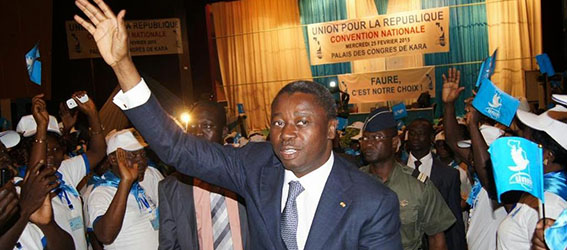South Africa: firearm crime
Corrupt police personnel in South Africa with criminal connections have contributed to a proliferation of illegal firearms

A young man poses with a gun in July 2016 in a house serving as a stronghold of the Mongrels gang, in Hanover Park, an impoverished and gang ridden
suburb, about 15 Km from the centre of Cape Town. Photo: RODGER BOSCH/AFP
Firearms are the most common weapon used to commit murder in South Africa. According to the official South African Police Service (SAPS) data, between 1 April, 2015 and 31 March, 2019, some 25,070 people (predominantly men) were murdered with a firearm compared to 19,355 individuals who were stabbed to death with knives over the same period. Of concern, since the 2015/16 reporting year, the number of firearm murders has increased by 32%. Firearms have also been the leading weapon used in attempted murder incidents, accounting for 13,360 cases in 2018/19. Robbery with aggravating circumstances (which predominantly involves the use of a firearm) has increased substantially since 2011/12, from 100,769 to 140,032 cases in 2018/19 (a 39% increase). T
o understand why South Africa has such a firearm crime problem, one has to take a historical view and reflect on events as far back as the late 1980s, when South Africa was in the grip of a serious firearm crime epidemic driven by turbulent political circumstances and the widespread availability of firearms. Key sources of illegal firearms during this period were: guns that had been lost by, or stolen from, licensed firearm owners (with the number of firearms that were reported lost or stolen increasing from 3,695 in 1985 to 13,670 in 1993); weapons supplied by the apartheid security forces to militia groups; and weapons smuggled into South Africa by liberation movements. Between the late 1980s and the late 1990s there was a substantial increase in interpersonal firearm crime.
For instance, between 1989 and 1992, the armed robbery rate ratcheted up by 40% (from 252 to 375 per 100,000) and the reported firearm murder rate, which had averaged four murders per 100,000 for much of the 1980s, increased to 10 per 100,000. In the face of such excessive firearm crime levels, the SAPS began to implement more rigorous firearm control measures from the late 1990s, which gained momentum with the establishment of the Firearms Control Act (FCA) in 2000. These controls entailed stricter firearm licensing procedures, such as improved background checks, safe storage requirements, an increase in the minimum age for firearm possession, and a limit on the number of licensed firearms a person may possess.
The SAPS’s more thorough vetting of firearm licence applicants from 2000 to 2010 resulted in a considerable reduction in the number of police-approved firearm licence applications. Between 1994 and 1999, an annual average of 194,000 licence applications were approved by the SAPS Central Firearm Registry (CFR), but for the period 2004/2005 to 2009/2010, the annual average of firearm licences approved by the CFR had drastically shrunk to 9,886. This sustained annual reduction in the approval of civilian firearm licences corresponded with a consistent and substantial decline in the loss/ theft of licensed civilian firearms, dropping from 29,009 in 1998/99 to 7,289 in 2015/16. Furthermore, the SAPS prioritised the seizure of illegal firearms, both within South Africa and in neighbouring Mozambique, which were to be destroyed along with surplus and obsolete SAPS weapons.
The SAPS has reported that between 1998/99 and 2013/14 it destroyed 1,189,884 firearms. The reduction in the loss/theft of licensed firearms and the seizure and destruction of such weapons meant that the number of available firearms in the illicit sector contracted. The significant decline in the availability of firearms, particularly illegal firearms, also appears to have had a significant effect on murder levels in South Africa. According to data published by the United Nations Office on Drugs and Crime there was a 33% decline in the number of firearm murders between 1998 and 2007, from 12,413 to 8,319. The more recent upturn in firearm crime in South Africa appears to be linked to a rise in the availability of firearms in the illegal sector, which have mainly been sourced via the police as well as licensed firearm owners.
In particular, criminals and organised criminal groups seeking to acquire firearms have increasingly targeted firearms under SAPS control and the CFR’s firearm licensing processes, frequently using corrupt practices. The most prominent case has been the illicit sale by a corrupt SAPS official of an estimated 2,400 confiscated firearms to two of Cape Town’s largest gangs. The individual involved, Colonel Christiaan Prinsloo, in collusion with other SAPS officials, was found guilty of acquiring these firearms from a SAPS stockpile that had been earmarked for destruction. Police investigations and ballistics evidence have revealed that between 2010 and 2016 some 1,066 murders were committed with 888 of these specific firearms. According to investigative news reports, it would appear these firearms have directly resulted in an intensification of violent gang conflicts throughout Cape Town.
In most of the approximately 1,000 police stations in South Africa the SAPS maintain firearm armouries, which usually include service weapons designated for their personnel, illegal firearms that have been recovered during operations, or firearms surrendered by members of the public. These armouries are referred to as Section 13 stores. The most recent data for these Section 13 stores was from January 2011, when, SAPS records show, there were 188,848 firearms in such stores. The security, management and administration of these stores has reportedly been inconsistent across police stations, and antiquated record-keeping systems have prevented real-time oversight. Unsurprisingly, this has created considerable risk of corruption, as the following three cases reveal. Firstly, in 2010 it was reported that an exhibit clerk at the Inanda police station in KwaZulu-Natal was instrumental in stealing 98 firearms from the Section 13 store.
He was jailed for 20 years. A site inspection by the Parliamentary Portfolio Committee on Police in June 2010 suggested that poor management and administrative practices at the Inanda station, and a lack of effective oversight by the KwaZulu-Natal SAPS firearm control structures, had contributed to conditions that were conducive to firearm theft. In the second example, a police raid on the home of an alleged leader of an organised criminal group in Norwood, Johannesburg, in 2014 led to the discovery of more than 300 unlicensed firearms, as well as ammunition and explosives. During the ensuing legal proceedings, it was revealed that some of these firearms were SAPS service firearms, while others had previously been surrendered to the SAPS for destruction as part of a national firearm amnesty at the Linden police station in Johannesburg.
There have also been three prominent cases in which SAPS members were connected to illegal firearm transfers from Section 13 stores to criminal groups in the Western Cape and KwaZulu-Natal. For example, in September 2017 it was reported that SAPS firearms from the Bellville South and Mitchells Plain SAPS stations had been sold to gang members. In December of the same year, a junior SAPS official was arrested in connection with supplying firearms to hitmen operating within the notorious Glebelands Hostel in uMlazi, KwaZulu-Natal. Over the past 10 years there have also been a number of cases where police officials at the station level have allegedly taken payoffs to illegally facilitate the processing of licence applications for people unfit to hold a licence as determined by the FCA.
In 2014, investigators discovered that CFR officials had been fraudulently issuing numerous firearm licences to an alleged senior gang leader and some 20 of his associates, including his wife, sister and other relatives in the Western Cape, in exchange for bribes. In 2018, two officials were arrested for accepting a bribe to arrange a firearm licence for someone who had been declared unfit in this regard. In KwaZulu-Natal, Chinese nationals have been implicated in paying bribes to police officials to secure temporary firearm licences. The diversion of firearms that were previously licensed to civilians in South Africa into the black market has also contributed to an increase in firearm crime and violence, with 65,208 licensed civilian firearms reported lost or stolen between 2011/12 and 2018/19.
In particular, there has been an increase in the reported loss and theft of such firearms in recent years, increasing from 7,289 in 2015/16 to 9,336 in 2018/19. There have been numerous reports of these weapons being used in the commission of crimes. For example, in October 2019, the SAPS seized eight illegal firearms in Gelvandale in Port Elizabeth in the Eastern Cape, with some of them reportedly stolen from licensed owners. The SAPS recently initiated a number of interventions to try and address the problem of illegal firearms. The Anti-Gang Unit was established and operations prioritising the seizure of illegal firearms have been launched, such as Operation Lockdown, a joint crime-combating operation with the military targeting high crime areas in Cape Town.
There have been some successes, with 5,350 illegal firearms seized in 2018/19. The SAPS has also announced that there will be a firearm amnesty between December 2019 and May 2020, which will enable individuals who unlawfully possess firearms to surrender them to the police. The amnesty, nonetheless, does not relate to firearms that have been used to commit crime. Further efforts are required, however, especially the need for improvements in the SAPS’s security systems for firearms under its control as well as in licensing processes.
Guy Lamb is the director of the Safety and Violence Initiative (SaVI) at the University of Cape Town. He works closely with various government departments on issues of safety promotion, and has published on arms control, violence reduction, urban safety, policing and peace-building issues in Africa for more than 20 years. He holds a PhD in criminology from the University of Cape Town













